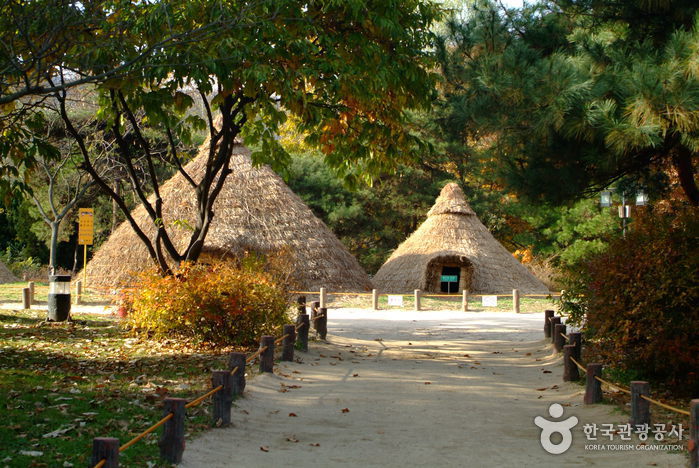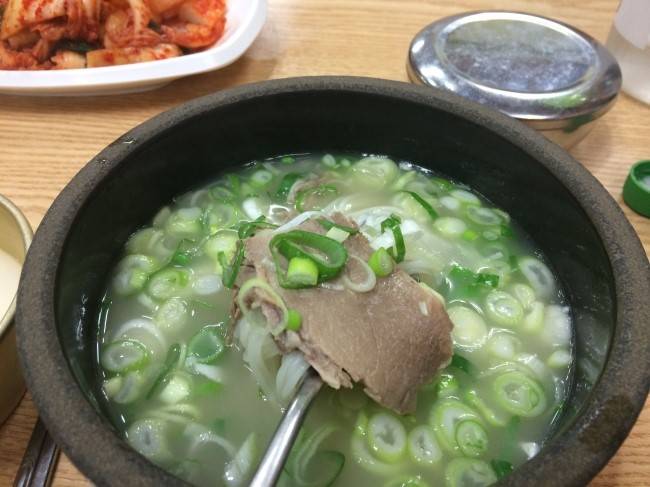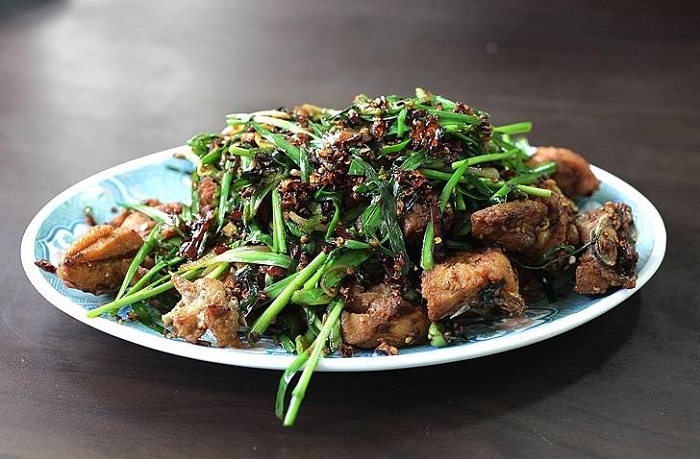Archaeological Site in Amsa-dong, Seoul (서울 암사동 유적)
6.5Km 2021-07-27
875, Olympic-ro, Gangdong-gu, Seoul
+82-2-3425-6520
The Archaeological Site in Amsa-dong reproduces the lifestyle of the Neolithic Era. Even the entrance gate is shaped like a huge dolmen and the trash cans are ancient diagonal-line patterned earthenware. Archaeological Site in Amsa-dong was excavated in 1925 when a flood washed away the soil on the banks of the Hangang River and exposed a large number of diagonal-line patterned earthenware. After several excavations, the Archaeological Site in Amsa-dong was established.
The site was a location for a massive colony, thus many ancient buildings, stone axes and stone arrows have been uncovered as well as countless diagonal-line patterned earthenware. The housing site is round with a spot in the center for fire. The site is colossal and possesses nine mud huts, two exhibition halls displaying ancient artifacts and an open mud hut where visitors can experience life in the Neolithic Era. The site offers many attractions such as mud huts and promenades. Archaeological Site in Amsa-dong is also very educational for children and families who want to learn and experience the Neolithic Age.
Namyangju Sareung Royal Tomb [UNESCO World Heritage] (남양주 사릉(정순왕후) [유네스코 세계문화유산])
6.5Km 2023-06-22
180, Sareung-ro, Namyangju-si, Gyeonggi-do
+82-31-573-8124
Sareung Royal Tomb is the tomb of Queen Jeongsun (1440-1521), a consort to King Danjong. She was perhaps the most tragic royal woman of the Joseon dynasty.
In 1453, she was selected to be queen out of many candidates and actually became the queen two years later. However, when King Danjong was forced to abdicate from the throne in 1457 and was exiled to Yeongwol in Gangwon-do, Queen Jeongsun was deprived of her title as well.
After King Danjong died, she built a thatched-roof house outside Seoul’s Dongdaemun Gate and lived there for the rest of her life, continuing to mourn her husband. The tomb’s name, Sareung, came from the fact that she had missed her dead husband so much.
Unlike other royal tombs, Sareung looks very simple. Its size is relatively small.
Aritaum - Hankuk Univ. of Foreign Studies Station Branch [Tax Refund Shop] (아리따움 외대역)
6.7Km 2024-04-18
25, Hwigyeong-ro, Dongdaemun-gu, Seoul
-
Olens - Hankuk Univ. of Foreign Studies Branch [Tax Refund Shop] (오렌즈 외대)
6.8Km 2024-04-22
1F, 16, Hwigyeong-ro, Dongdaemun-gu, Seoul
-
Uireung Royal Tomb [UNESCO World Heritage] (서울 의릉(경종, 선의왕후) [유네스코 세계문화유산])
6.8Km 2021-06-03
146-20, Hwarang-ro 32-gil, Seongbuk-gu, Seoul
+82-2-964-0579
Uireung is the royal tomb of King Gyeongjong (reign 1720-1724), the 20th ruler of the Joseon dynasty, and his second wife, Queen Seonui.
King Gyeongjong was the first son of King Sukjong and Janghuibin, who was one of King Sukjong’s concubines. King Gyeongjong, who was born weak and anemic, died four years after becoming the king, without any great political achievements. Uireung tombs differ from the other royal double tombs in that they are not placed side-by-side. Instead, according to geomantic theory, one tomb has been placed directly behind the other one. The arrangement also shows that when making tombs, Korean ancestors did their best to protect the natural environment. Another feature of Uireung Royal Tomb is the stone fence raised using twelve stone posts. Each post has a letter inscribed, representing one of the twelve sibijisin gods.
CU - Hankuk University of Foreign Studies Branch [Tax Refund Shop] (cu한국외국어대학교점)
6.8Km 2024-06-27
107, Imun-ro, Dongdaemun-gu, Seoul
-
Olive Young - Junggye Station Branch [Tax Refund Shop] (올리브영 중계역)
7.0Km 2024-04-18
1335, Dongil-ro, Nowon-gu, Seoul
-
Olive Young - Hwigyeong-dong Branch [Tax Refund Shop] (올리브영 휘경동)
7.0Km 2024-04-22
1F Hwigyeong Bldg., 78, Mangu-ro, Dongdaemun-gu, Seoul
-
Yuil Seolleongtang (유일설렁탕)
7.0Km 2021-03-29
154, Yongmasan-ro, Gwangjin-gu, Seoul
+82-2-452-5860
It is a store that has been in operation since 1987. This Korean dishes restaurant is located in Gwangjin-gu, Seoul. The most famous menu is ox bone soup.
Gyeongbarwon (경발원)
7.0Km 2021-03-26
34, Mangu-ro 21-gil, Dongdaemun-gu, Seoul
+82-2-2244-2616
It is a Chinese-run store. This Chinese (cuisine) restaurant is located in Dongdaemun-gu, Seoul. The most famous menu is sweet and sour chicken.

![Namyangju Sareung Royal Tomb [UNESCO World Heritage] (남양주 사릉(정순왕후) [유네스코 세계문화유산])](http://tong.visitkorea.or.kr/cms/resource/44/2480844_image2_1.jpg)
![Aritaum - Hankuk Univ. of Foreign Studies Station Branch [Tax Refund Shop] (아리따움 외대역)](http://tong.visitkorea.or.kr/cms/resource/60/2889660_image2_1.jpg)
![Olens - Hankuk Univ. of Foreign Studies Branch [Tax Refund Shop] (오렌즈 외대)](http://tong.visitkorea.or.kr/cms/resource/14/2888114_image2_1.jpg)
![Uireung Royal Tomb [UNESCO World Heritage] (서울 의릉(경종, 선의왕후) [유네스코 세계문화유산])](http://tong.visitkorea.or.kr/cms/resource/80/2690680_image2_1.jpg)

![Olive Young - Junggye Station Branch [Tax Refund Shop] (올리브영 중계역)](http://tong.visitkorea.or.kr/cms/resource/41/2889641_image2_1.jpg)
![Olive Young - Hwigyeong-dong Branch [Tax Refund Shop] (올리브영 휘경동)](http://tong.visitkorea.or.kr/cms/resource/37/2888937_image2_1.jpg)


 English
English
 한국어
한국어 日本語
日本語 中文(简体)
中文(简体) Deutsch
Deutsch Français
Français Español
Español Русский
Русский